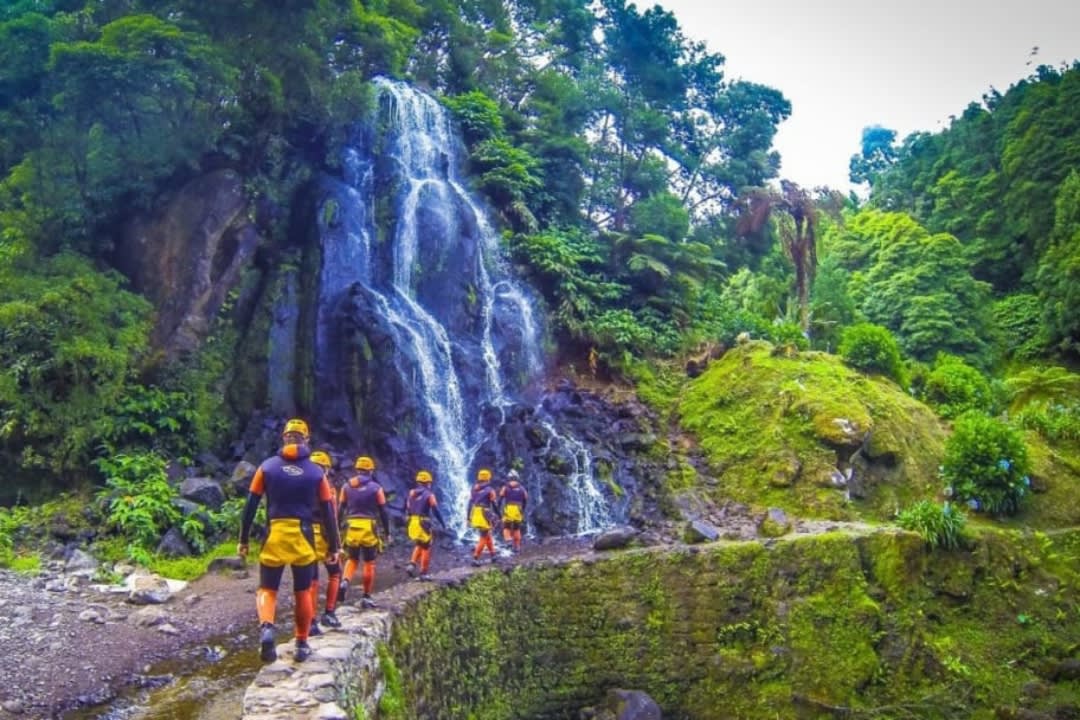
Wild Azores: Outdoor activities shaped by the nature
Discover stunning adventures shaped by volcanic peaks, lush valleys, and dramatic black sand beaches. Immerse yourself in the untamed beauty of the Azores.
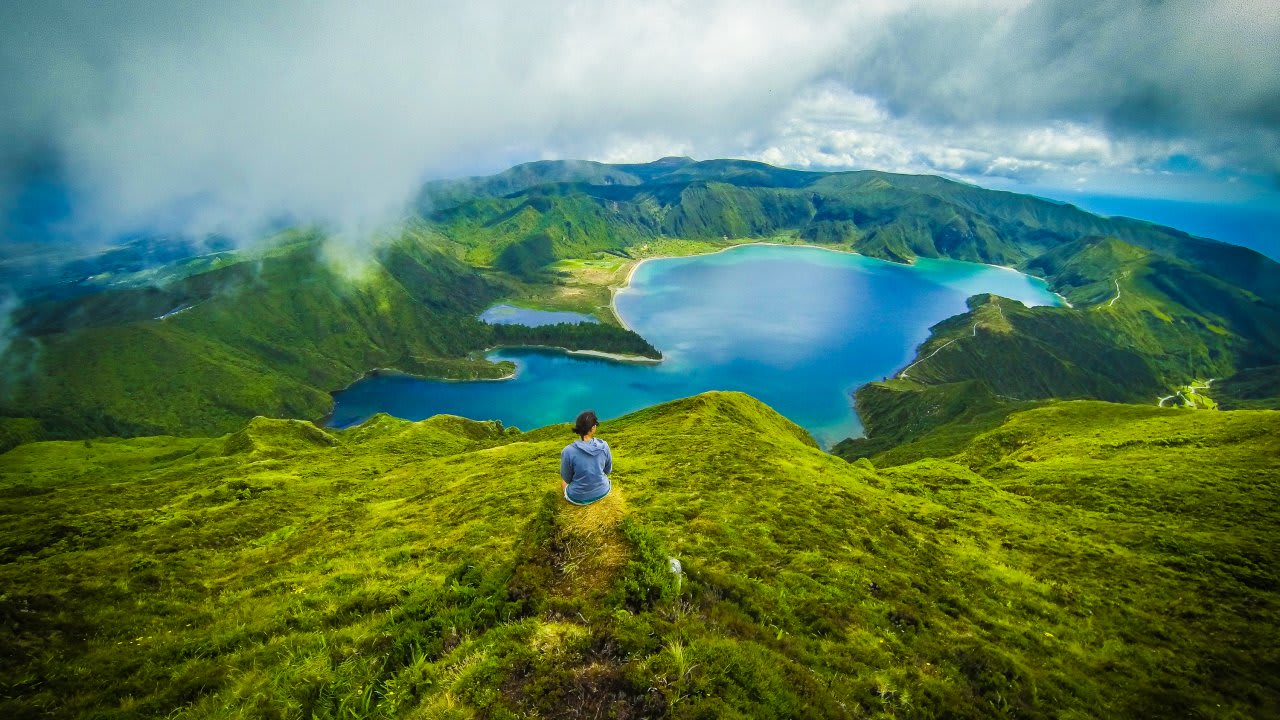
The Portuguese archipelago of the Azores is like a mosaic of islands, with each piece of land telling its own unique story. From Sao Miguel, the largest and most populated island, to Graciosa, discover the range of landscapes and activities that will appeal to all tastes.
Looking to recharge your batteries just a few hours from Europe? The breathtaking scenery, astonishing biodiversity and rich culture of the Azores islands make them the perfect spot for outdoor enthusiasts and nature lovers.
The preservation of these islands means you can get away from it all and stroll through the lush green spaces, admire the pristine lakes or observe endemic species such as whales and dolphins. A true wilderness gem, you won't be confronted with mass tourism because this is a destination that is still unknown to the general public. With just 250,000 inhabitants, this volcanic territory offers serenity and total disconnection... Fancy exploring the wild flora and fauna? Then pack your suitcase!
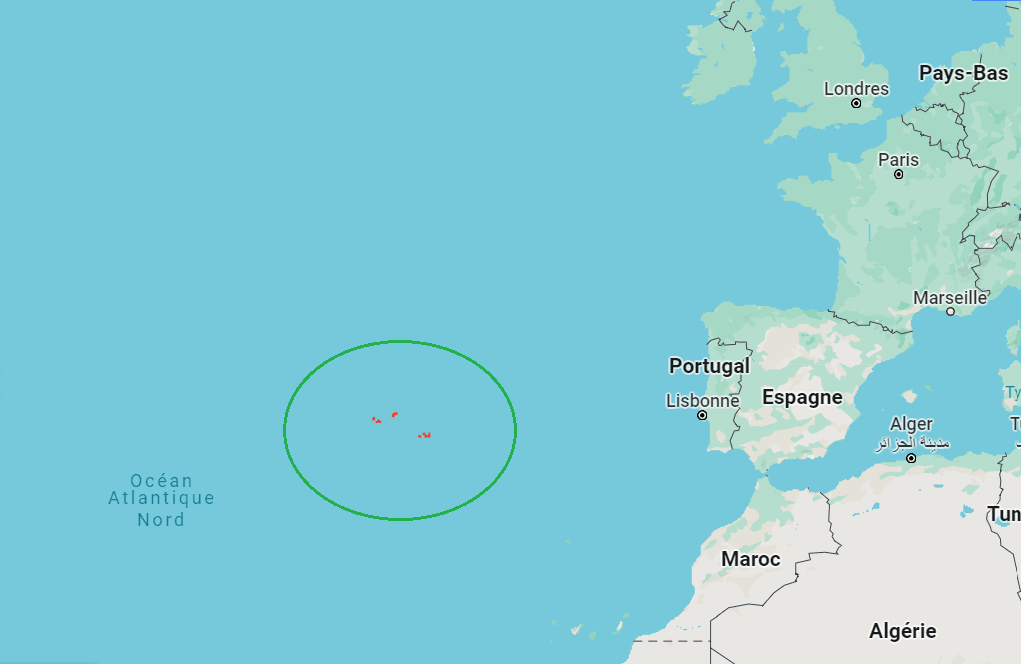
Nestling in the middle of the Atlantic Ocean, the Azores are like jewels emerging from the azure of the ocean. Made up of nine volcanic islands, this archipelago in Portugal offers a unique and unforgettable experience just 2 hours 15 minutes by plane from Lisbon and around 1,360 kilometres west of the capital. From Paris, you can get there in around 4 hours. The Azores are part of Macaronesia ("Islands of the Blessed"), a group of islands that includes the Canaries, Madeira and Cape Verde. The name of this region comes from ancient Greek, as the area marked the limits of the world known to the Greeks.
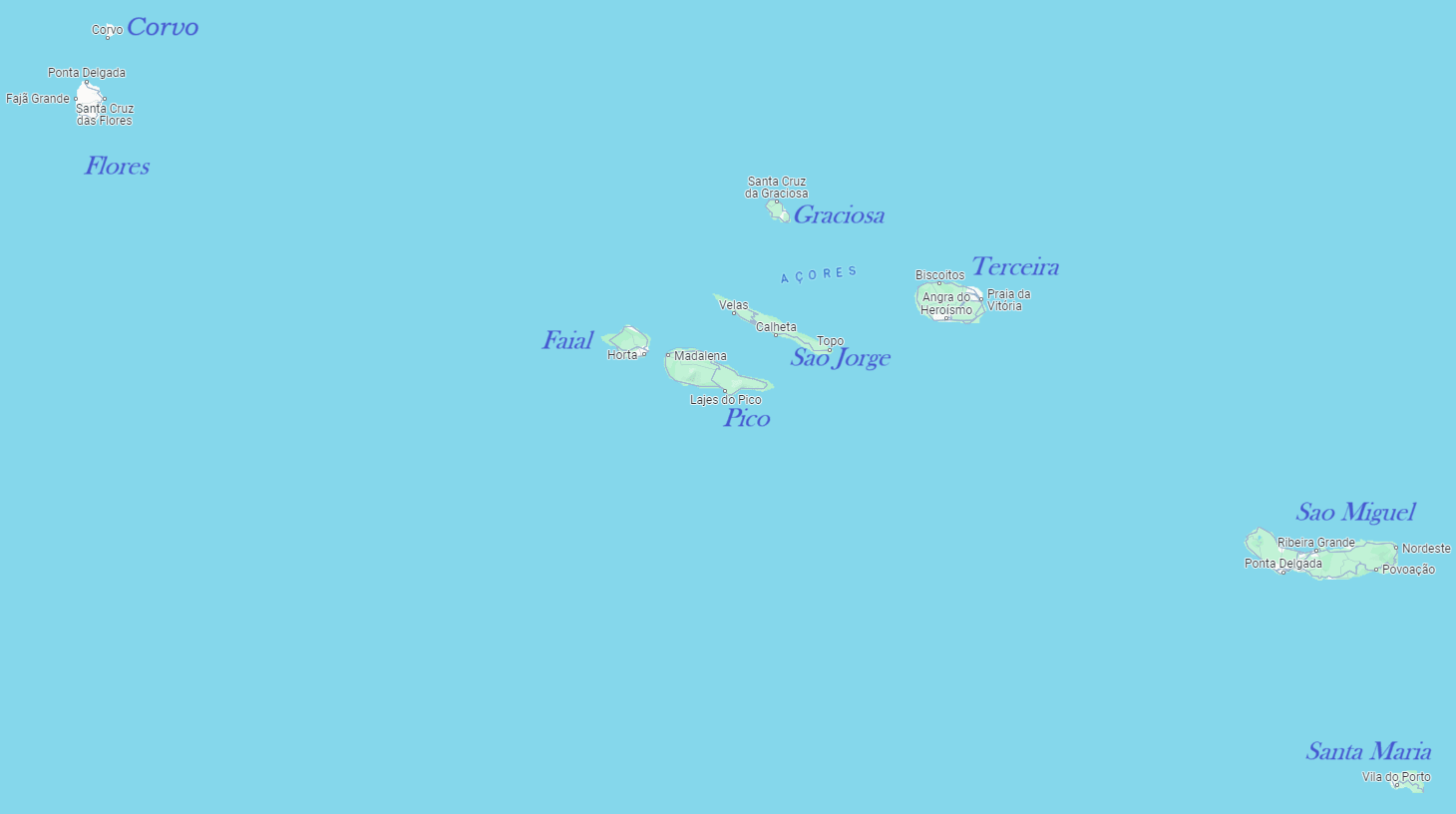
This destination enjoys a subtropical climate influenced by the Atlantic Ocean, but remains mild and generally temperate throughout the year. Average temperatures range from 14 to 26 degrees Celsius, and humidity is quite high due to its geographical location. This climatic factor varies from island to island, although the rates are similar: humidity varies between 76% in Santa Maria and 80% on the island of Sao Miguel. In winter, the rate is always higher than 80%. This is why temperatures are sometimes felt to be higher than they actually are in summer and lower in winter.
Due to its location in the Atlantic, the weather can be unpredictable and rainfall can be heavy, particularly between November and March: the weather can change from torrential downpours to dazzling sunshine in the space of a moment. In summer, the weather tends to be drier, with sunnier days. The varied topography of the islands and the influence of sea currents mean that each island can have its own climate, a microclimate, hence the variety of landscapes.
The best time to visit the Azores is from June to October, when the days are sunnier and rain is less frequent. The water temperature fluctuates between 21 and 23 degrees from July to October.
The Azores Islands offer a unique and diverse experience for visitors. The islands offer breathtaking scenery with volcanoes, lakes, waterfalls, craters and coastal landscapes. The rugged beauty and unspoilt flora and fauna make this destination a natural treasure trove that will appeal to adventurers looking to combine nature exploration with outdoor activities. Did you know that these islands are the first archipelago in the world to have been officially certified by the EarthCheck Sustainable Destination programme? This international certification confirms that the country's authorities are committed to preserving the environment.
Working with the local community and partners in the tourism industry, the Azores government is committed to preserving its precious culture, land and marine ecosystems through sustainable practices. The projects the Azores are working on today include rainwater harvesting and the use of renewable energies - geothermal, solar, wind and hydroelectric - to reduce energy consumption and conserve natural resources.
You'll learn a lot about the history of the islands, which have a rich historical and cultural heritage. In the 15th and 16th centuries, Portuguese settlers gradually arrived on the archipelago, although they were not the first to settle there. In fact, according to scientists, the Vikings were the first to discover the islands, 700 years before the Portuguese.
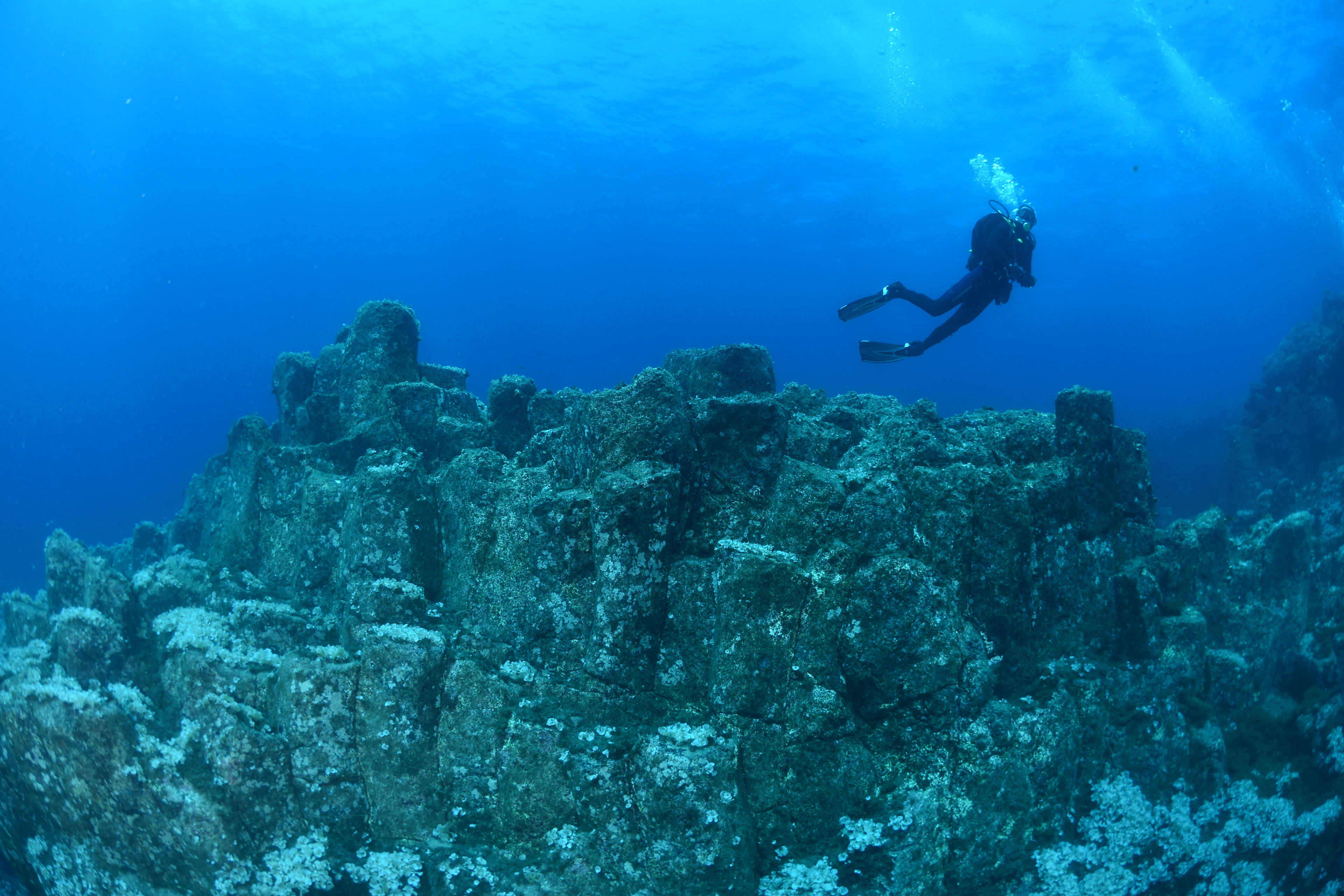
The Azores also have a rich underwater heritage, with a large number of diving sites: on the island of Sao Miguel alone you'll find 50 to explore the marine underworld. The island as a whole boasts more than 1,000 wrecks and various lava structures that you can contemplate on an underwater journey through time. In fact, some of the ruins are a trace of the transatlantic voyages of European trade that took place from the 16th to the 20th century, including emigration to America, the transatlantic slave trade and the silver route to South America...
The quickest way to get from island to island is by plane. SATA Air Açores offers regular flights between the islands. This airline provides connections that range from 20 minutes between São Miguel and Santa Maria, to 1 hour 15 minutes between São Miguel and the islands of the Western Group, Corvo and Flores.
If you have more time, there are ferry services operated by Atlânticoline that link the islands together, particularly during the summer months. The intra-island ferry journey is a little longer than the flights, but is very popular as it offers stunning views of the Atlantic Ocean and surrounding islands.
There are several ferry lines in the Azores. The blue line is the busiest of them all, running between Faial (Horta) and Pico (Madalena). There are many daily trips in both directions. A green line runs daily between Faial, Pico and São Jorge. The pink line runs daily between Flores and Corvo. However, we advise you to find out before you leave, as there may be changes over time.
It's perfectly possible to hire a car. In fact, it's often the best option for exploring the islands at your own pace. Most of the islands have car rental agencies, and driving is relatively easy on the wide, well-maintained roads.
You can also opt for the public buses that serve the main towns and villages. Timetables can be limited, especially at weekends, so it's important to plan ahead. In Sao Miguel, ANC AEROBUS offers a return fare of €8, with stops in all the city's main districts. Tickets can be purchased at specialised ticket offices, information kiosks or directly from the driver.
Discover what's special about each island: all these natural gems offer unique features and the most incredible outdoor activities.
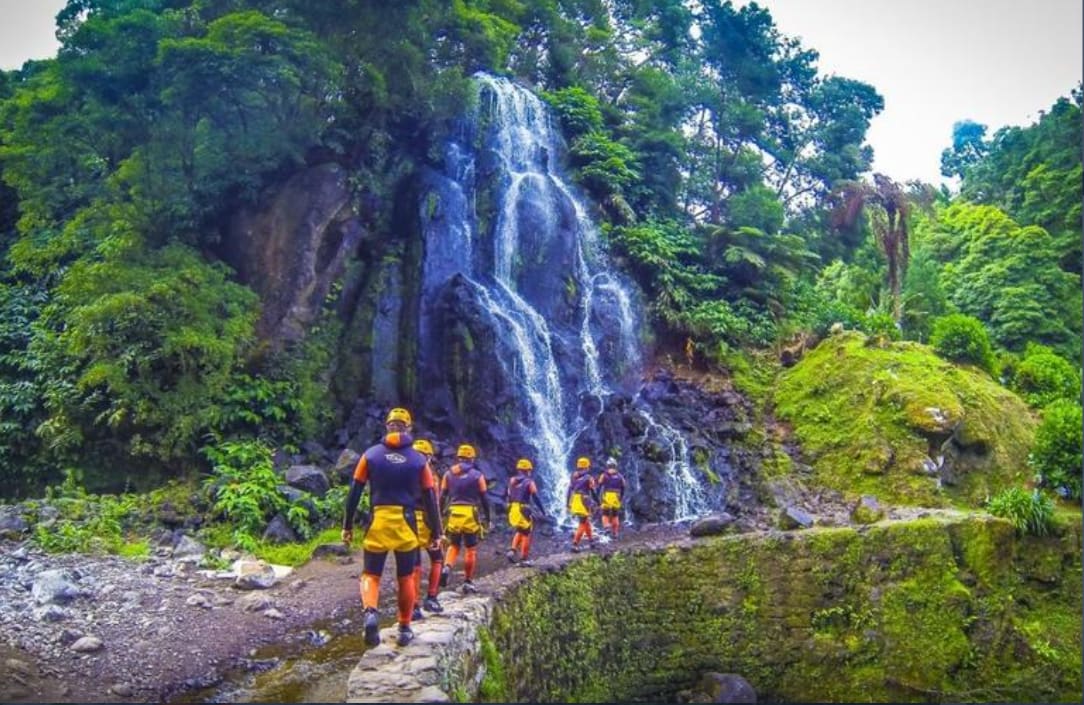
Sao Miguel, the largest island in the Azores (750 square kilometres), is a must-see destination for nature lovers. With its breathtaking landscapes, waterfalls, enchanting volcanic lakes, steep cliffs and black sand beaches such as Santa Barbara, Sao Miguel offers an authentic and unforgettable experience. The island's capital, Ponta Delgada, is a great place to take a stroll around the port or visit the church of Sao Sebastiao, for example, a fine example of 18th-century Portuguese architecture.
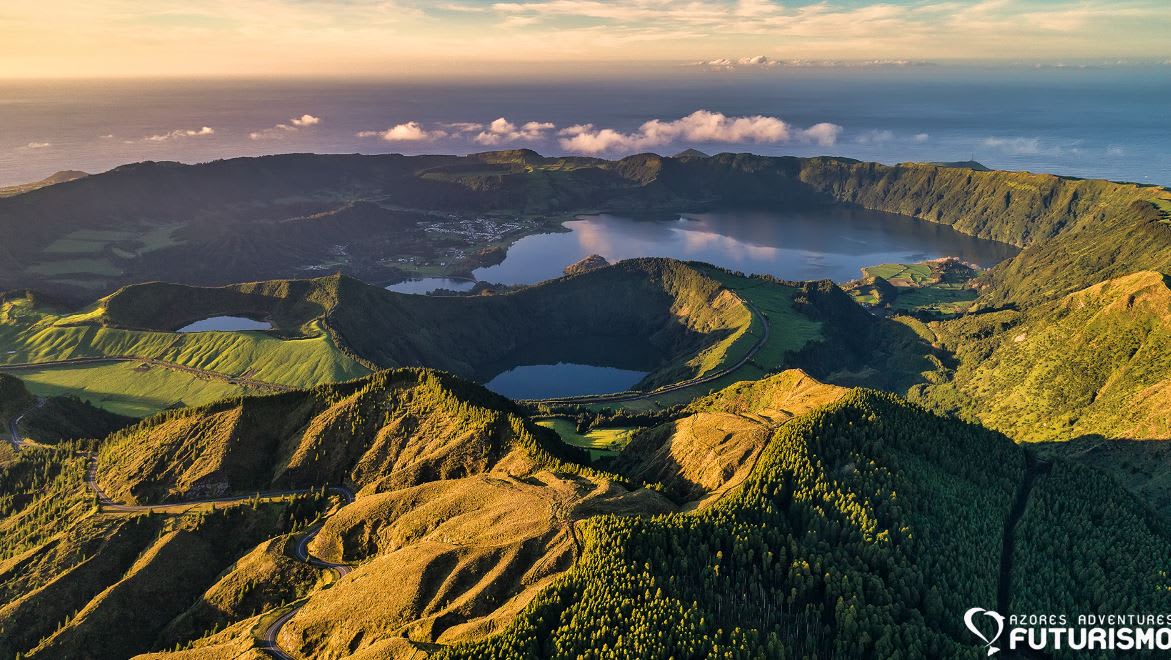
Hiking enthusiasts can explore its picturesque trails, passing through lush forests and impressive volcanic craters that demonstrate the power of nature. The Sete Cidades "7 cities" lake awaits you! Considered one of the 7 wonders of Portugal, this crater, 5 km in diameter and 500 metres deep, is the ideal place for hiking in Sao Miguel. So don't miss out on all the things to do on Sao Miguel, a surprising island!
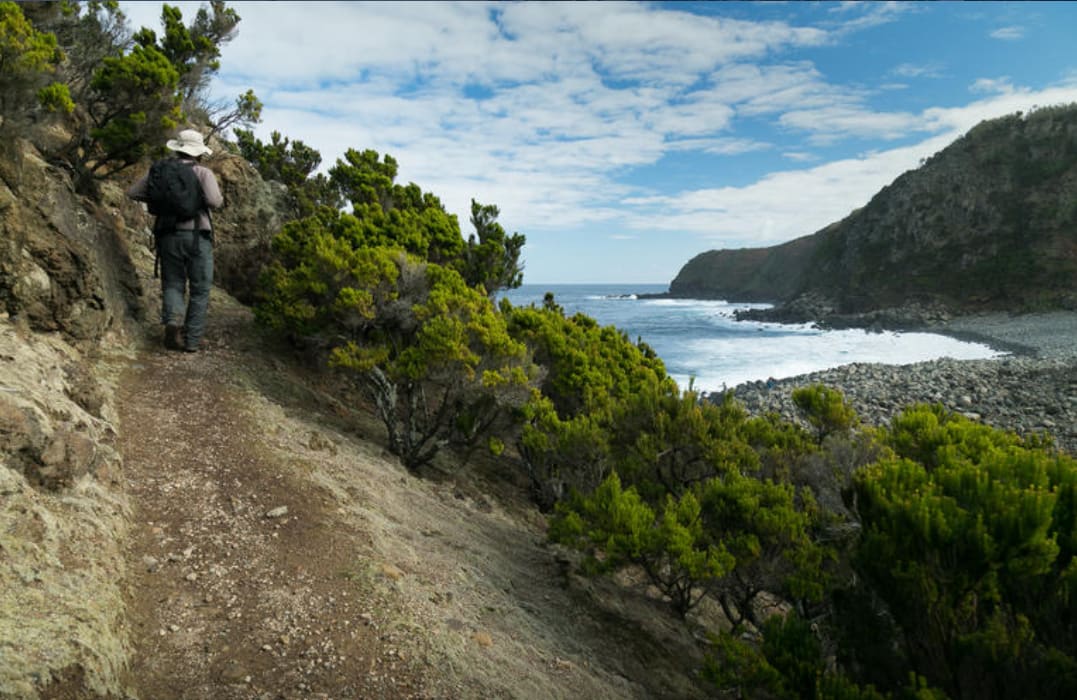
At 400.3 square kilometres, Terceira was the third island to be discovered, hence its name, which means "third" in Portuguese. Its tourist capital and colourful historic centre echo the island's colonial past. You can stroll around and be enchanted by the town of Andra do Heroismo, a UNESCO World Heritage Site with its well-preserved architecture dating back to 1534, when it was founded. Its port has enabled the world's great civilisations to trade throughout history! You'll be enchanted by the picturesque cobbled streets and its 16th-century fort, which once kept the pirates at bay...
To get the most out of the island, there's plenty to choose from when it comes to activities on Terceira. Thanks to its wild flora and fauna, you can opt forwhale watching from Angra do Heroísmo, a spectacle not to be missed. And if you've always dreamed of diving and swimming with dolphins, you can make your dream come true! You can also go snorkelling on the island of Terceira, where you can admire the beautiful underwater world...
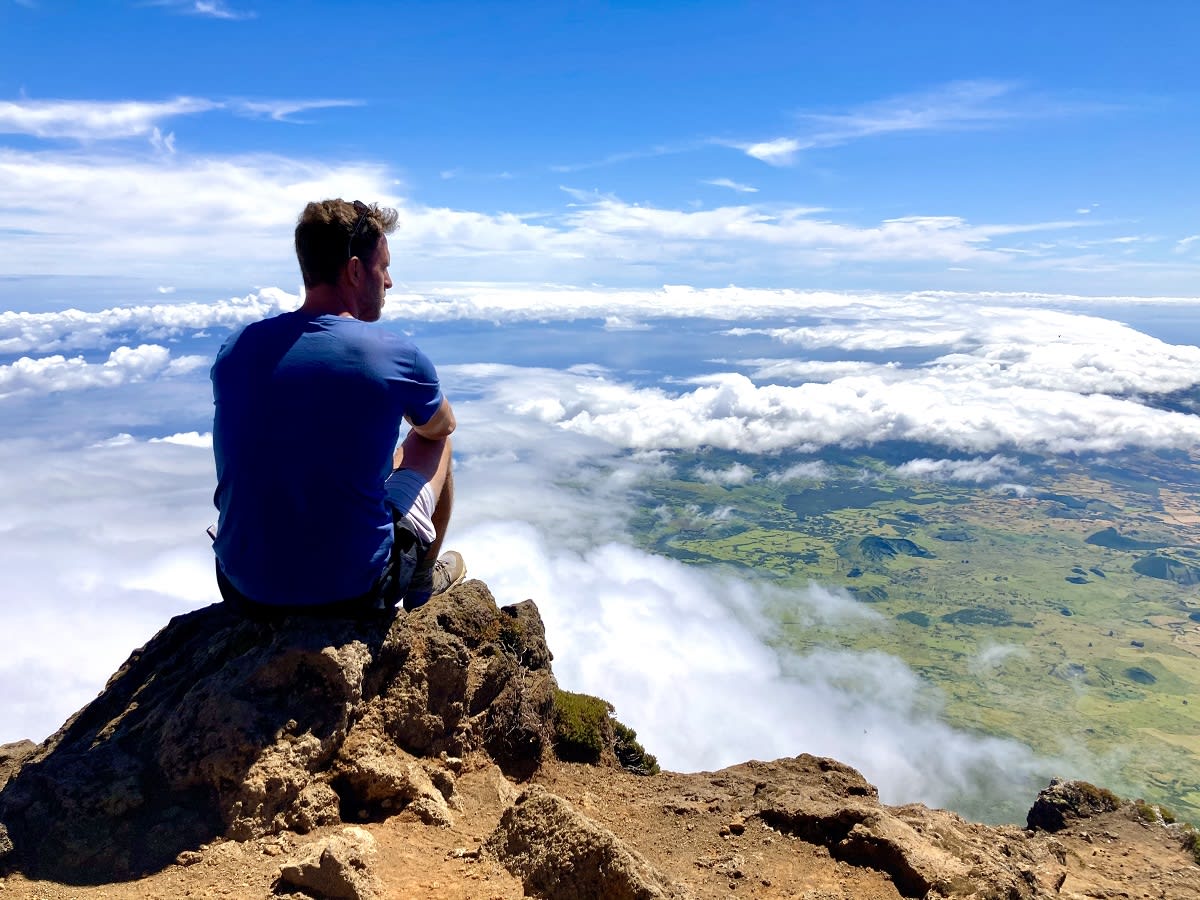
Pico Island, the second largest island in the Azores, takes its name from Ponta do Pico, the highest point in the Azores and Portugal! At 2,351 metres above sea level, it dominates the island's skyline, giving you a panoramic view of the surrounding area. You'll have the chance to admire the heights on the 8-hourMount Pico hiking tour! Sports enthusiasts, get ready!
Vine-growing and the unique landscape of low black stone walls are the island's strong points: its ancient wine-growing tradition has earned it UNESCO World Heritage status. You can also visit the Wine Museum in Madalena, the island's capital to the west. The Whalers' Museum also offers a great experience, where you can learn more about whale activity and the evolution of these cetaceans around the archipelago throughout history.
If you're into potholing, you'll love the dozens of volcanic caves, including theGruta das Torres, Portugal's largest lava cave, measuring over 5km in length! Its rich interior is made up of geological formations: stalactites, stalagmites and other highly varied structures await you. What's more, the island boasts more than twenty small lakes and several natural pools. The Cais do Pico natural pool offers a breathtaking setting: you can bathe with a view of the ocean.
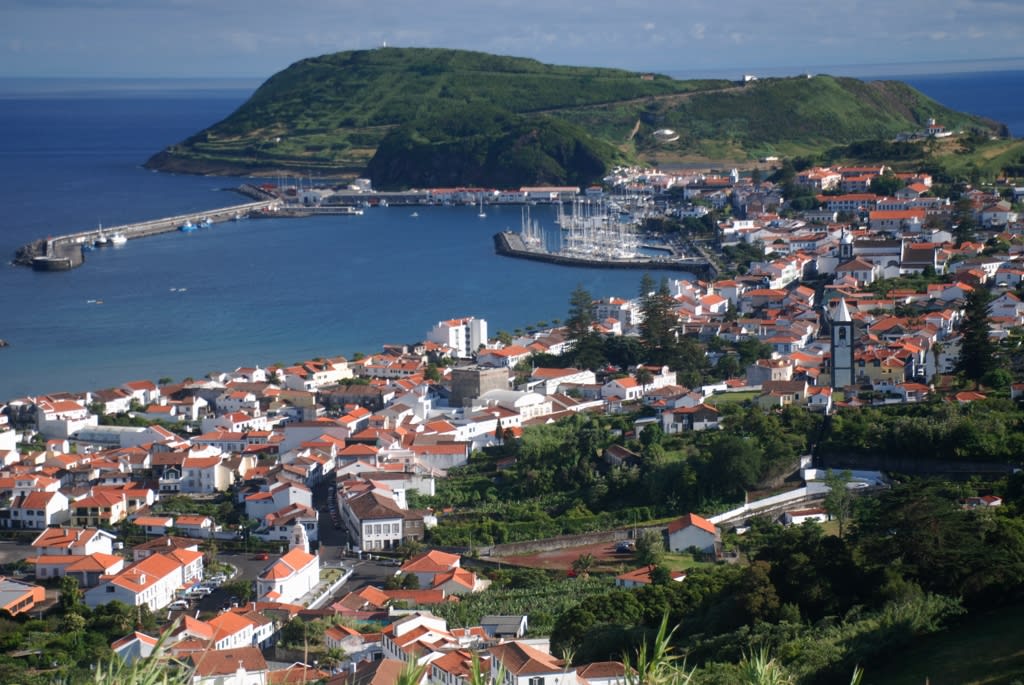
Its impressive volcanic crater, surrounded by lush landscapes, offers the chance to explore it on unique hikes. The Marina de Horta (the capital) is an attraction not to be missed: the picturesque port has been bustling with life since 1980 and is a true symbol of the island. You'll see sailing boats of all sizes and nationalities with colourful paintings and messages left by sailors from all over the world: it's one of the most cosmopolitan areas of the archipelago and the 4th most visited ocean marina!
The island of Faial is also known as "the blue island", because its rich flora includes blue hydrangeas, which flower abundantly in summer. And speaking of the colour blue, the ocean is a magnificent blue, giving you the chance to try scuba diving in excellent conditions! Guided adventure diving in Faial gives you the chance to meet endemic species... After the effort, the comfort: you can relax on the beautiful black sand beaches, on Almoxarife beach for example.
Graciosa is the most northerly of the archipelago. It is 12.5km long and 8.5km wide, with a total surface area of 61.7 square kilometres. It can be crossed in 20 minutes by car and 14 minutes by boat. Make no mistake, even though Graciosa is the smallest island in the archipelago, it offers a whole list of things to do! Declared a Biosphere Reserve by Unesco in 2007, it is surely the wildest island in the Azores, with its Caldeira da Graciosa volcanic crater covered in dense vegetation. With its remote location and scenery shaped by lava and wind, you can escape from time, enter a volcano and descend into its bowels. From the summit you can admire Terceira, Faial, Sao Jorge and Pico! Within the crater, you'll be enchanted by Furnas do Enxofre, a blown-out cave that is a reminder of its volcanic origin: in the centre is a lake of cold water and a gas emanation... Nature and its mysteries...
The highlight of this Azores island is undoubtedly its countless thermal springs, where you can relax and recharge your batteries! The soothing mineral waters and the 100% natural pools created by the lava allow you to immerse yourself in a completely out-of-the-ordinary setting!
If this article has inspired you to escape to these beautiful Atlantic islands, you should know that we have a wide range of experiences to choose from on the islands of the Azores.
If you decide to start or finish your trip in Portugal, you can try out a number of activities, in the air, on land or in the water. If you like water activities, there are a good number of surfing spots in Portugal, including Peniche and Ericeira. If you want to take to the skies and admire the scenery from above, try paragliding in Lisbon to enjoy the views over the wild beaches without getting wet...